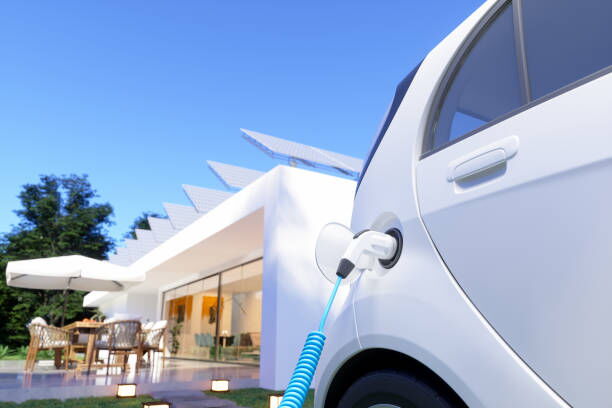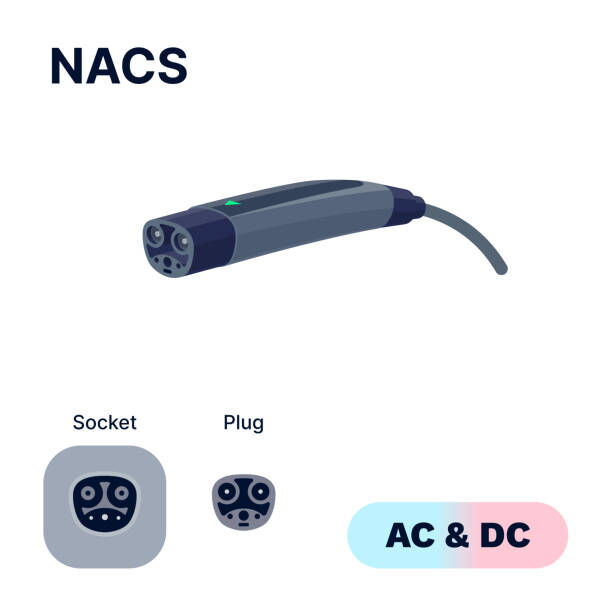With the steady rise in electric vehicle (EV) ownership, the importance of having a reliable and efficient home EV charger has never been more evident. Whether you're a first-time EV owner or an experienced driver looking to upgrade your charging setup, understanding the different types of chargers and features available is crucial for a seamless charging experience.
EV chargers come in three primary levels: Level 1, Level 2, and Level 3. Level 1 chargers are the most basic, offering a slow but steady charge using a standard household outlet. Level 2 chargers are significantly faster and better suited for daily home use. Level 3 chargers, often called DC fast chargers, provide the fastest charging times but are typically reserved for commercial or public spaces due to their high power requirements and installation costs.
When selecting a home EV charger, several factors need to be considered, from the type of electrical supply you have to your vehicle's connector compatibility. In this guide, we'll explore each consideration in detail to help you choose the best charger for your needs.

Before diving into the selection process, it's essential to understand the key differences between the three levels of EV chargers:
These chargers use a standard 120V household outlet. They offer charging speeds of around 3-5 miles of range per hour, making them best suited for plug-in hybrids or EV owners with short daily commutes. While affordable and easy to set up, Level 1 chargers are often too slow for the needs of fully electric vehicles.
Operating on 240V, Level 2 chargers provide much faster charging rates — typically 12–60 miles of range per hour, depending on the vehicle and the charger's power output. They are ideal for home installation and can fully charge most EVs overnight.
These are the fastest chargers available, providing up to 80% charge in as little as 20–30 minutes. However, they require a commercial-grade power supply and are not practical for home use. Level 3 chargers are usually found at public charging stations and along highways.
Since Level 3 chargers are not suitable for residential installation, your primary focus will likely be choosing between a Level 1 and Level 2 charger — with Level 2 being the more popular and efficient choice for most EV owners.
One of the first decisions you’ll need to make when choosing a home EV charger is whether to go for a single-phase or three-phase model. This choice largely depends on your home’s electrical infrastructure and your charging needs.
These chargers operate on a voltage range of 120–240V and are the standard for most residential properties, especially in North America. They are ideal for home use, offering sufficient power for overnight or daytime charging sessions.
Operating on 240–480V, three-phase chargers deliver higher power outputs and are commonly used in commercial settings, workplaces, and some European residential properties. They allow faster charging but require a three-phase power supply, which most homes do not have without significant upgrades.
Bottom Line:
If you're installing a home EV charger, a single-phase charger is typically the best and most cost-effective option unless you have access to a three-phase power supply.
Understanding the difference between Type 1 and Type 2 chargers is critical, particularly when it comes to compatibility with your vehicle.
These chargers come with a five-pin connector and are predominantly used for American and Asian-manufactured EVs, such as those from Nissan, Mitsubishi, and older models from Ford. Type 1 chargers are well-suited for overnight home charging, especially if you only have one EV to charge.
Type 2 chargers feature a seven-pin connector and are the standard for European-made EVs like BMW, Audi, and Volkswagen. These chargers are often used with Level 2 systems, providing faster charging and better compatibility for future vehicle upgrades.
Tip:
If you plan to charge multiple EVs or are considering future-proofing your setup, opting for a Type 2 charger might be the smarter choice, as it is increasingly becoming the global standard.
Another important decision when selecting a home charger is whether you want a tethered or untethered (socket-only) unit.
Tethered chargers have a fixed cable attached to the charging unit, much like a traditional gas pump hose. They offer convenience because you don't need to unpack and connect your cable each time you charge. However, they can be less flexible if you own different vehicles or plan to change your EV in the future, as cable types and lengths are fixed.
Untethered chargers feature a socket into which you can plug your own cable. They offer more flexibility, allowing you to use different cables for different EVs if necessary. They are also neater, giving a cleaner look when not in use.
If convenience is your top priority, go for a tethered charger. If flexibility and future-proofing are more important, an untethered charger is the way to go.
Compatibility between your EV and your home charger is critical to ensure seamless charging. Most EVs sold in North America use the J1772 connector for Level 1 and Level 2 charging.
However, there are exceptions:
The most common connector for non-Tesla vehicles in North America. It supports both Level 1 and Level 2 charging.

Previously known as Tesla’s proprietary connector, NACS is now being adopted by other manufacturers such as Ford, GM, and Rivian. If you own a Tesla or a newer EV adopting this standard, ensure your home charger supports NACS — or purchase an adapter if needed.

CCS connectors are used mainly for DC fast charging but are worth mentioning if you anticipate using public charging networks often.

Pro Tip:
Always check your vehicle’s connector type before purchasing a charger, and look for chargers that are compatible or come with available adapters.
When it comes to installation, EV chargers generally fall into two categories: plug-in units and hardwired units.
Plug-in chargers connect to an existing outlet, typically either a NEMA 14-50 or a NEMA 6-50 outlet:
NEMA 14-50 Outlet:
This four-prong outlet has two hot wires, one ground wire, and one neutral wire. It’s the most common outlet for home EV charging, offering robust protection and wide compatibility.
NEMA 6-50 Outlet:
This three-prong outlet includes two hot wires and one ground wire, without a neutral wire. It’s slightly simpler but still offers solid safety features for EV charging.
Plug-in chargers are easier and cheaper to install. They also offer the flexibility to move the charger if you relocate or want to upgrade in the future.
Hardwired chargers are permanently connected to your home’s electrical system without the use of a standard plug. This provides a cleaner look, slightly better weatherproofing (ideal for outdoor installations), and may be necessary if you want to install a higher-power charger.
Keep in mind:
Hardwiring typically requires a licensed electrician and could involve higher installation costs.
Here are additional factors that you should keep in mind before purchasing a home EV charger:
Look for chargers that offer at least 32 amps for faster charging. Some models go up to 50 amps for even quicker top-ups.
Wi-Fi-enabled chargers allow you to monitor and control your charging sessions through a smartphone app. Some chargers offer scheduled charging, energy tracking, and remote start/stop functionality.
Ensure that the charging cable is long enough to reach your vehicle comfortably from your installation point. Standard cables are around 16–25 feet.
If installing outdoors, make sure the charger is rated for outdoor use (typically IP66 or higher).
Choose a charger that can accommodate higher power outputs or different EV models if you plan to upgrade your vehicle in the future.
Check for local, state, or federal rebates and incentives for installing EV chargers. These programs can significantly reduce the cost of your purchase and installation.
Choosing the right home EV charger is a critical step toward maximizing the convenience, efficiency, and overall experience of owning an electric vehicle. By carefully considering factors like charger level, phase, type compatibility, tethered versus untethered design, connector type, and installation options, you can ensure you invest in a solution that fits your current and future needs.
Whether you're installing your first charger or upgrading your existing setup, making an informed choice will ensure your EV is always ready to go — whenever you are.
Take your time to research, compare products, and consult with a licensed electrician if needed. With the right home EV charger, the road ahead will always be fully charged and ready for your next adventure.